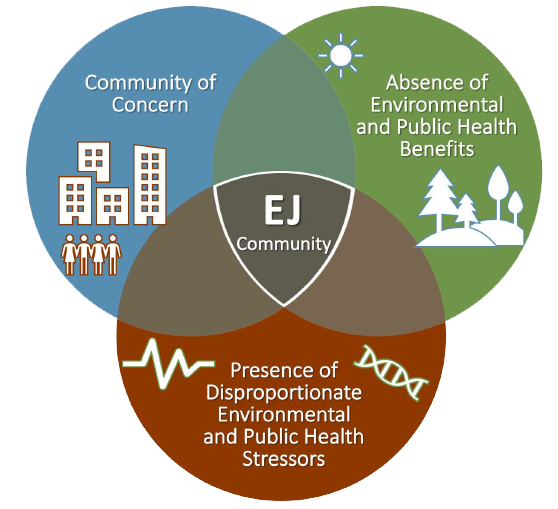
Where Are NJ's Environmental Justice Communities?
New Jersey defines “Environmental Justice Communities” by three criteria: presence in a community of concern; the presence of disproportionate environmental and public health stressors; and the absence or lack of environmental and public health benefits.

DEP has updated EJMAP with new stressor data. Any permit application submitted on or after 1/31/24 must use the new stressor data layer for analysis. The tool will default to the revised layer and the original layer will remain as an archived layer.
To learn what stressor data was updated in EJMAP, visit the 2024 EJMAP Data Update. For more information on the previous round of EJMAP updates, view the 2023 EJMAP Update Notice.
The EJMAP tool allows users to visualize New Jersey’s overburdened communities, locate certain polluting facilities regulated by the Environmental Justice Law, and analyze what existing environmental and public health stressors currently impact these OBCs.
For details of calculations behind EJMAP, please read EJMAP Technical Guidance .
Watch this tutorial for more info on using EJMAP.
Questions or comments about the EJMAP can be sent to ejmapfeedback@dep.nj.gov.

Presence of Communities of Concern
Inclusive of all overburdened communities identified in the recently signed EJ law.
- Low-income: At lease 35% of households qualify as low-income households; or
- Minority: at least 40% of the residents identify as minority or as members of a state recognized tribal community; or
- Limited English proficiency: at lease 40% of the households have limited English proficiency
Once EJIC convenes, additional considerations not specified in the recently signed EJ law include, but are not limited to:
- Carless households
- Social vulnerability index
- Low and moderate income (LMI)
Presence of Disproportionate Environmental and Public Health Stressors
Inclusive of all environmental and public health stressors identified in the recently signed EJ law.
Disproportionate quantity of of sources of environmental pollution, including, but not limited to:
- Concentration of stationary and mobile sources of air pollution
- Contaminated sites
- Waste transfer stations or other solid waste facilities
- Recycling facilities
- Water quality, water pollution from facilities, or combined sewer overflows; or
- Conditions that may cause potential public health impacts, including, but not limited to, asthma, cancer, elevated blood lead levels, cardiovascular disease, and developmental problems.
Once EJIC convenes, additional considerations not specified in the recently signed EJ law include, but are not limited to:
- Maternal and prenatal health stressors
- Increased vulnerability to climate change stressors
Lack or Absence of Environmental and Public Health Benefits
The lack or absence of net improvements in social welfare that result from changes in the quantity or quality of ecosystem goods and services attribute to policy or environmental decisions. Once EJIC convenes, additional considerations not specified in the recently signed EJ law include, but are not limited to:
- High quality parks
- A large quantity of parks
- Tree canopy resulting in reduces urban heat island effect
- Safe bicycle and pedestrian corridors in populated communities, and
- Green infrastructure
- Access to healthy food
- Access to quality public housing
- Access to quality public transportation
- Access to clean energy alternatives
- Access to resources to mitigate climate change stressors
Read more about the stationary definition of Overburdened Communities.